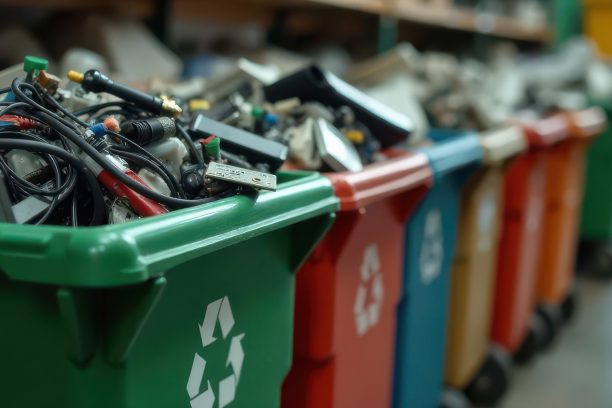Building a Circular Future with Sustainability in Textiles
Sustainable Fashion Week is here. It brings together brands to showcase how sustainability can be implemented, inspiring a collective shift in how we create, wear, and think about fashion.
Sustainability in textiles can feel complicated. Supply chains stretch across countries, profit margins are tight, and regulations are changing. Still, each challenge presents an opening to stand out. Companies that embrace sustainable practices can save money, streamline operations, and create a stronger market presence.
Why Sustainability Matters
Sustainability is more than a checklist. It’s about creating products and processes that benefit both your business and the planet. Choosing materials carefully, using energy efficiently, and designing items that last can reduce costs and build trust with customers.
To put it in context, consider these figures from Europe:
- Each person produces roughly 355 kilograms of CO₂ from clothing every year, up from 270 kilograms just two years ago.
- Europeans throw away roughly 16 kilograms of textiles each year, or around 160 t‑shirts
- Only 1 percent of used textiles is recycled into new clothing illustrating the untapped potential in circular use of materials.
Selecting sustainable materials, designing products that last, and planning for reuse or recycling can reduce environmental impact and create a competitive advantage.
Turning Challenges into Opportunities
Textile production has many stages, each with its own impact. Cotton needs land, water, and chemicals. Synthetic fibers depend on fossil fuels. Factories consume energy and release dyes and chemicals. Products travel long distances, and some end up in landfills or incineration.
Instead of seeing these as problems, we can think of them as opportunities for innovation. Textiles EPR encourages brands to consider the full lifecycle of their products. Compliance is not only about avoiding fines. It can create systems that recover value, reduce waste, and strengthen customer trust.
Practical Steps for Sustainable Fashion
1. Rethink materials
Organic cotton, recycled polyester, and fibers from algae or agricultural waste are increasingly viable. RLG helps brands assess which materials are most effective while considering Textiles EPR obligations.
2. Reduce energy use
Switching to renewable power and streamlining production processes lowers emissions and reduces costs. RLG supports brands in tracking progress, setting net-zero targets, and reporting results clearly.
3. Design for longevity
Durable clothing or products designed for easy recycling fit naturally into circular business models. RLG’s Circular Take Back services make these systems practical and efficient.
4. Manage end-of-life responsibly
EPR regulations provide guidance for collection, recycling, and reuse. Acting on these rules helps brands recover value, minimize waste, and demonstrate sustainability leadership.
Taking these steps moves brands beyond compliance and positions them as industry leaders.
How RLG Supports Brands
Sustainability doesn’t have to be overwhelming. RLG works with textile and fashion companies to make textile compliance and sustainable practices achievable. We help brands:
- Understand Textiles EPR rules and stay confidently compliant
- Set up collection, recycling, and reuse systems that work
- Explore circular solutions for unsold stock and returns
- Turn sustainability into a real competitive advantage
The textile industry will continue to evolve. Climate and regulatory pressures are increasing. Brands that approach sustainability as an opportunity rather than a burden will thrive.
If your company is preparing for Textiles EPR and wants to turn compliance into an advantage, RLG can help. Together, we can minimize environmental impact, stay compliant, and build a stronger future for your brand.









